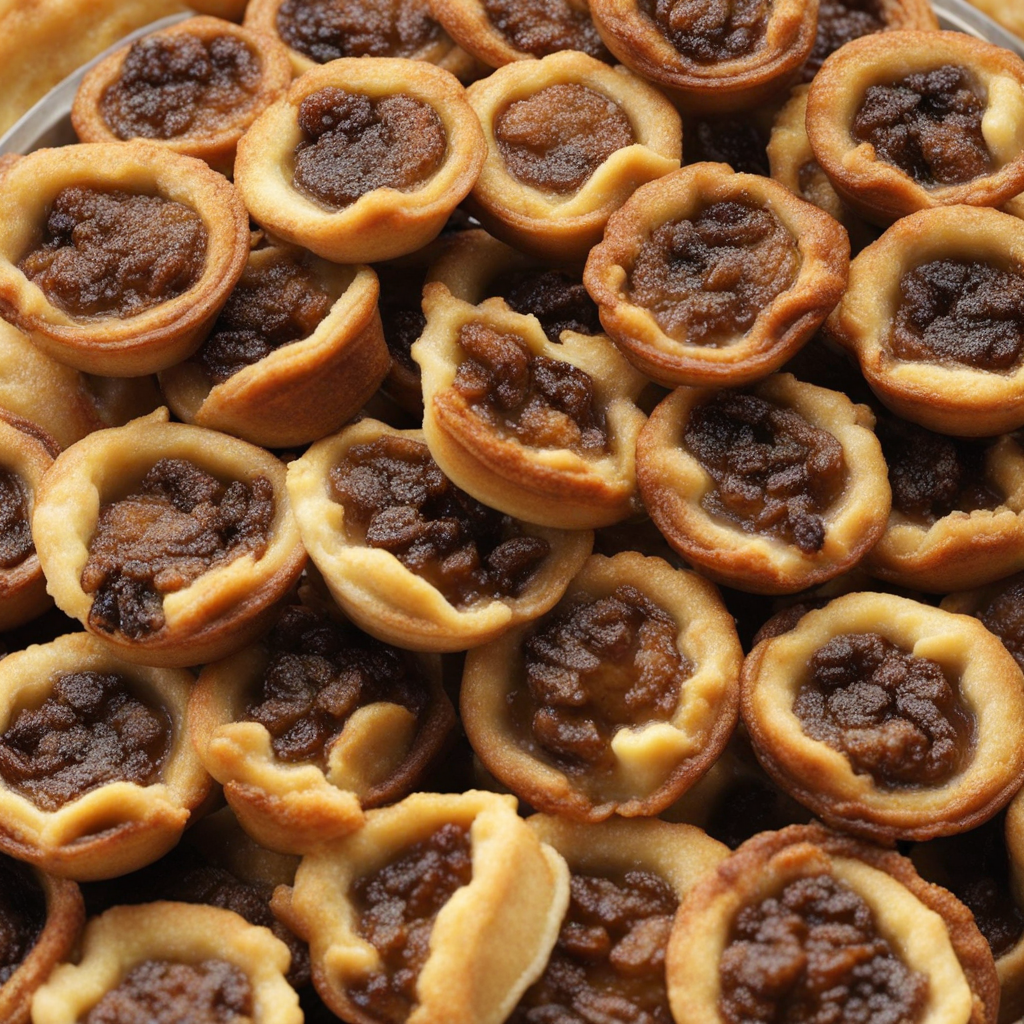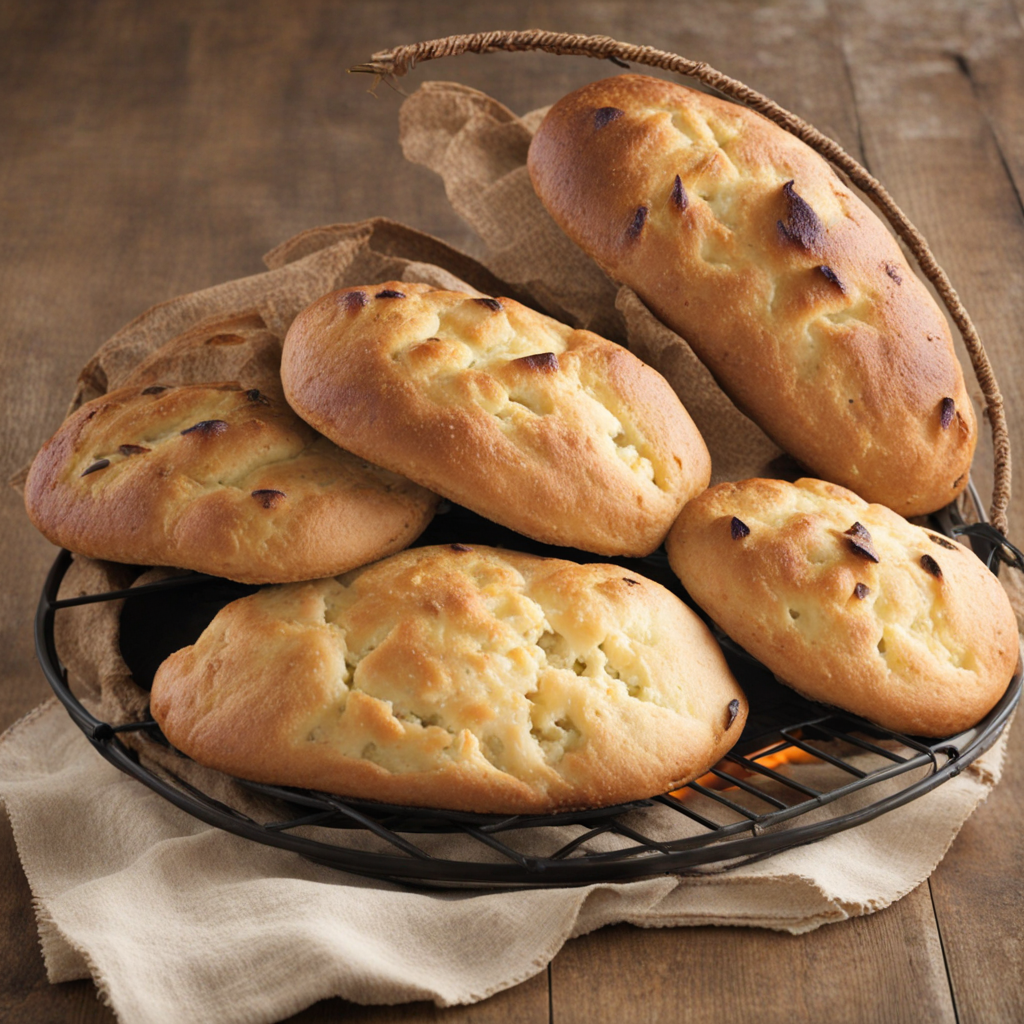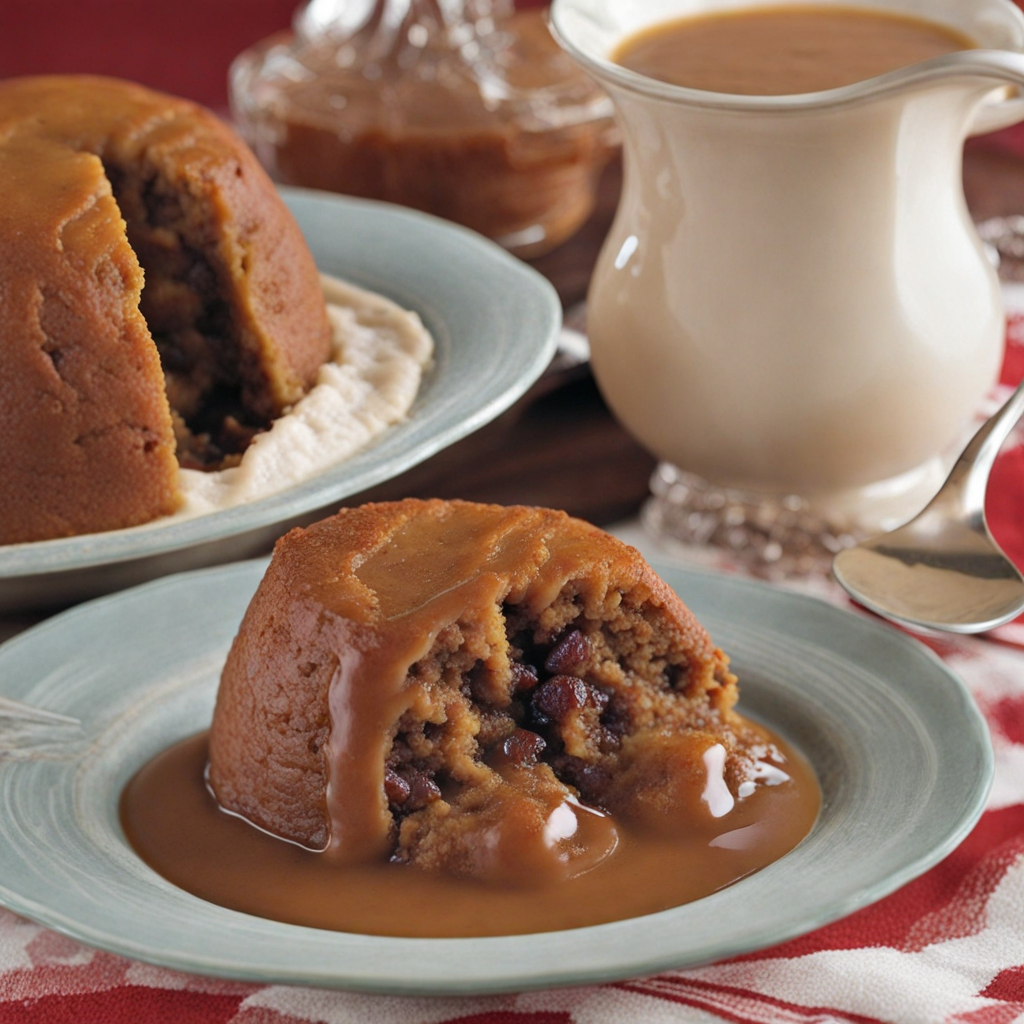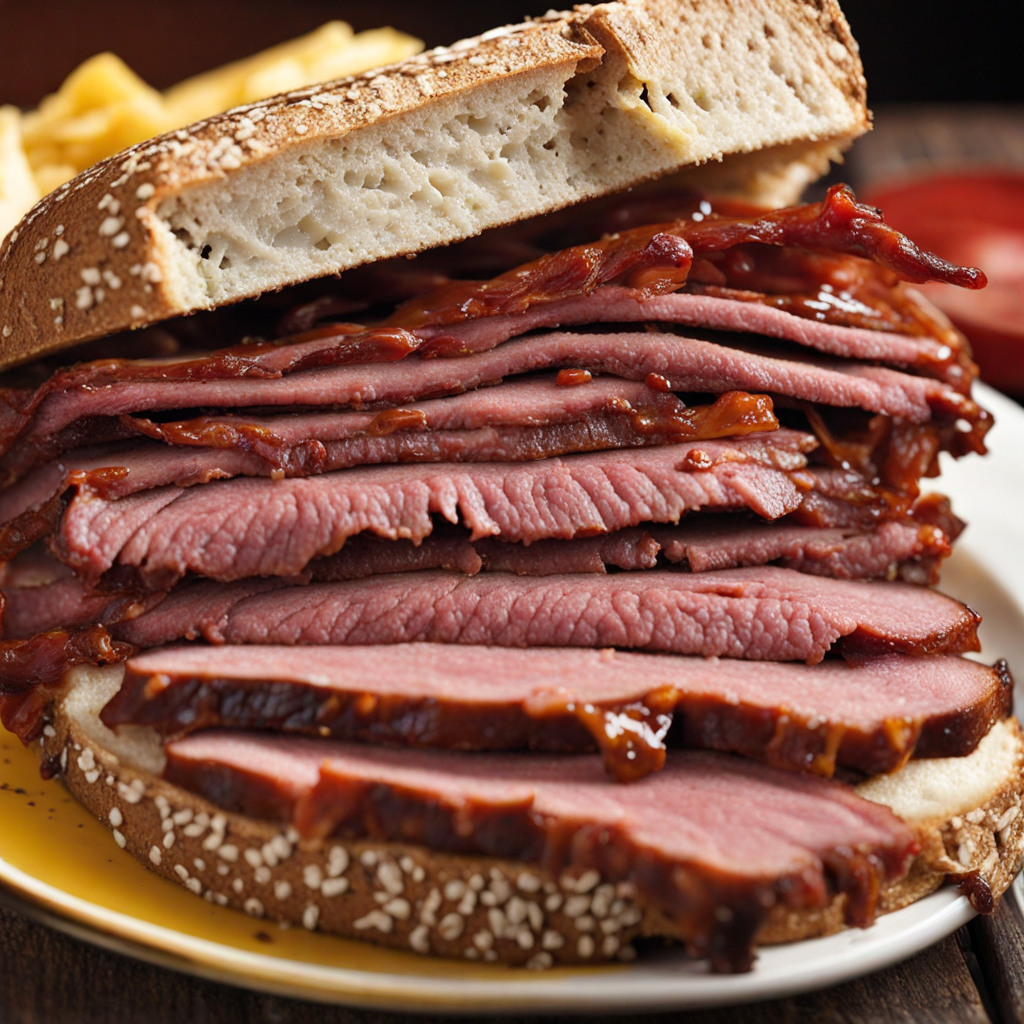Butter Tarts
Butter tarts are a quintessential Canadian dessert that embody a delightful combination of sweetness and richness. These small pastries consist of a flaky, buttery crust filled with a gooey mixture of butter, sugar, and eggs. The filling, which can be made with varying degrees of sweetness and texture, is often enhanced with the addition of vanilla or maple syrup, providing a unique depth of flavor that resonates with the essence of Canadian cuisine. The tarts are typically baked until the filling is just set, resulting in a luscious center that has a slightly caramelized top that contrasts beautifully with the crisp pastry. One of the most enchanting aspects of butter tarts is their versatility. While the classic version is undeniably popular, many variations exist, allowing for the incorporation of various ingredients such as raisins, pecans, or chocolate chips. This means that each bite can offer a different experience, from the chewy texture of dried fruit to the crunch of nuts, all while maintaining the signature buttery sweetness that defines this treat. The smooth, rich filling is a perfect counterpart to the tender, flaky crust, making each tart a delightful indulgence. Butter tarts are often enjoyed as a dessert or a sweet snack and are a beloved staple at Canadian bakeries and family gatherings. Their nostalgic appeal and homemade charm evoke memories of cozy kitchens and festive celebrations, making them not just a treat but a symbol of Canadian heritage. Whether enjoyed warm or at room temperature, butter tarts are a must-try for anyone seeking to explore the delicious flavors of Canadian desserts, leaving a lasting impression with their simple yet decadent taste.
How It Became This Dish
Tarte au Beurre: A Sweet Slice of Canadian History Tarte au beurre, or butter tart, is an iconic dessert that embodies the heart and soul of Canadian culinary heritage. This sweet, gooey treat has deep roots in the country's history and is often a symbol of Canadian identity, especially in the province of Ontario. Its development over time reflects the blending of cultures, the evolution of baking techniques, and the enduring appeal of simple, comfort food. #### Origins: A Culinary Melting Pot The origins of tarte au beurre can be traced back to the early settlers in Canada, particularly those of French descent. The French-Canadian community, with its rich tradition of pastry-making, contributed significantly to the development of this dessert. Early versions of the butter tart likely emerged in the 17th and 18th centuries, when French settlers brought their culinary practices to New France. The basic components of a butter tart—sugar, butter, and eggs—were readily available to these early settlers, who would have used local ingredients such as maple syrup and brown sugar. The use of these sweeteners is reflective of the agricultural landscape of Canada, where sugar production was often a labor-intensive process involving the harvesting of sap from sugar maple trees. The earliest recorded recipe for butter tarts can be found in a cookbook published in 1900, by a Canadian author named "Mrs. A.B. McEwen." However, the dish likely existed long before this, passed down through generations of home cooks who cherished its simplicity and deliciousness. The exact origins remain somewhat ambiguous, but the consensus is that it evolved from similar European desserts, including the English treacle tart and the French tarte au sucre. #### Cultural Significance: A Symbol of Canadian Identity Tarte au beurre holds a special place in Canadian culture, particularly in Ontario, where it is often regarded as a quintessential Canadian dessert. The tart is not just a treat; it represents a connection to the land, the seasons, and the communal experience of sharing food with family and friends. The butter tart is especially significant during holidays and special occasions. Its popularity surged in the 20th century, coinciding with the rise of home cooking during and after the World Wars. As families gathered around the kitchen table, the butter tart became a staple dessert, symbolizing warmth, comfort, and a sense of belonging. Moreover, the butter tart has also become a point of pride for many Canadian bakers, leading to an array of regional variations. Some prefer their tarts with raisins or pecans, while others insist on a plain filling to let the buttery sweetness shine. This diversity reflects the broader Canadian identity—multicultural, regional, and rich in tradition. #### Development Over Time: A Culinary Evolution As the years passed, the butter tart's recipe and presentation evolved, influenced by changing tastes and culinary trends. The classic recipe typically consists of a flaky pastry shell filled with a mixture of butter, sugar, and eggs, baked until the filling is set and the top is golden brown. However, variations began to emerge as different communities and families put their unique spin on the dessert. By the mid-20th century, butter tarts were being made with a variety of sweeteners, including corn syrup, which provided a different texture and flavor. The introduction of chocolate chips, coconut, and nuts into the filling was another significant development, appealing to the evolving palate of Canadians who sought more complex flavors in their desserts. The 21st century has seen a resurgence of interest in traditional Canadian foods, including butter tarts. This revival has been fueled by the farm-to-table movement, which emphasizes local and sustainable ingredients. Many artisanal bakers and chefs have taken this classic dessert and elevated it, experimenting with gourmet versions that incorporate unique flavors and high-quality ingredients. Festivals celebrating butter tarts have sprung up, such as the Ontario Butter Tart Festival, where bakers compete for the title of the best butter tart. These events not only honor the beloved dessert but also foster community engagement and encourage culinary creativity. #### The Butter Tart Today: A National Treasure Today, butter tarts are not only a cherished homemade treat but also a symbol of Canadian culinary excellence. They have found their way into cafes, bakeries, and restaurants across the country, each establishment offering its unique twist on the classic recipe. The dessert has gained international recognition, with food enthusiasts and tourists seeking out authentic Canadian butter tarts as a must-try delicacy. In the broader context of Canadian cuisine, the butter tart stands alongside other iconic dishes such as poutine and Nanaimo bars, showcasing the country's diverse food culture. It serves as a reminder of the simple pleasures of home cooking and the importance of tradition in a rapidly changing world. #### Conclusion: A Legacy of Sweetness In summary, tarte au beurre is far more than just a delicious pastry; it is a testament to Canada's rich culinary history and cultural identity. From its humble beginnings with French settlers to its status as a beloved national dessert, the butter tart has evolved while remaining a cherished symbol of home and community. As Canadians continue to embrace their culinary heritage, the butter tart will undoubtedly remain a sweet slice of history, delighting generations to come with its buttery goodness and rich tradition. Whether enjoyed at a family gathering, a local festival, or a cozy café, each bite of this delectable tart carries with it the stories of those who came before, making it an enduring part of Canada's gastronomic landscape.
You may like
Discover local flavors from Canada







